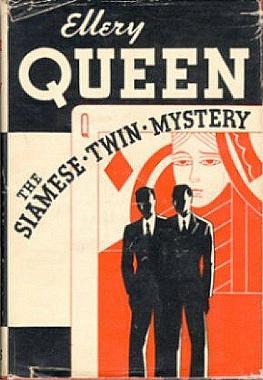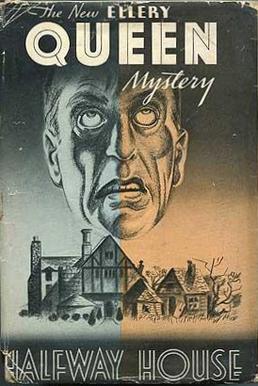
Detective fiction is a subgenre of crime fiction and mystery fiction in which an investigator or a detective—whether professional, amateur or retired—investigates a crime, often murder. The detective genre began around the same time as speculative fiction and other genre fiction in the mid-nineteenth century and has remained extremely popular, particularly in novels. Some of the most famous heroes of detective fiction include C. Auguste Dupin, Sherlock Holmes, and Hercule Poirot. Juvenile stories featuring The Hardy Boys, Nancy Drew, and The Boxcar Children have also remained in print for several decades.

A whodunit or whodunnit is a complex plot-driven variety of detective fiction in which the puzzle regarding who committed the crime is the main focus. The reader or viewer is provided with the clues to the case, from which the identity of the perpetrator may be deduced before the story provides the revelation itself at its climax. The investigation is usually conducted by an eccentric, amateur, or semi-professional detective.

Crime fiction, detective story, murder mystery, mystery novel, and police novel are terms used to describe narratives that centre on criminal acts and especially on the investigation, either by an amateur or a professional detective, of a crime, often a murder. It is usually distinguished from mainstream fiction and other genres such as historical fiction or science fiction, but the boundaries are indistinct. Crime fiction has several subgenres, including detective fiction, courtroom drama, hard-boiled fiction, and legal thrillers. Most crime drama focuses on crime investigation and does not feature the courtroom. Suspense and mystery are key elements that are nearly ubiquitous to the genre.

Ellery Queen is a pseudonym created in 1928 by the American detective fiction writers Frederic Dannay (1905–1982) and Manfred Bennington Lee (1905–1971). It is also the name of their main fictional detective, a mystery writer in New York City who helps his police inspector father solve baffling murder mysteries. Dannay and Lee wrote most of the novels and short story collections in which Ellery Queen appears as a character, and these books were among the most popular American mysteries published between 1929 and 1971. Under the pseudonym Ellery Queen, they also edited more than thirty anthologies of crime fiction and true crime. Dannay founded, and for many years edited, the crime fiction magazine Ellery Queen's Mystery Magazine, which has been published continuously from 1941 to the present. From 1961 onwards, Dannay and Lee commissioned other authors to write thrillers using the pseudonym Ellery Queen, but not featuring Ellery Queen as a character; some such novels were juvenile and were credited to Ellery Queen Jr. They also wrote four mysteries under the pseudonym Barnaby Ross, which featured the detective Drury Lane. Several movies, radio shows, and television shows were based on their works.

Mystery is a fiction genre where the nature of an event, usually a murder or other crime, remains mysterious until the end of the story. Often within a closed circle of suspects, each suspect is usually provided with a credible motive and a reasonable opportunity for committing the crime. The central character is often a detective, who eventually solves the mystery by logical deduction from facts presented to the reader. Some mystery books are non-fiction. Mystery fiction can be detective stories in which the emphasis is on the puzzle or suspense element and its logical solution such as a whodunit. Mystery fiction can be contrasted with hardboiled detective stories, which focus on action and gritty realism.
Clayton Rawson was an American mystery writer, editor, and amateur magician. His four novels frequently invoke his great knowledge of stage magic and feature as their fictional detective The Great Merlini, a professional magician who runs a shop selling magic supplies. He also wrote four short stories in 1940 about a stage magician named Don Diavolo, who appears as a minor character in one of the novels featuring The Great Merlini. "Don Diavolo is a magician who perfects his tricks in a Greenwich Village basement where he is frequently visited by the harried Inspector Church of Homicide, either to arrest the Don for an impossible crime or to ask him to solve it."

Ellery Queen is an American TV drama series, developed by Richard Levinson and William Link, who based it on the fictional character of the same name. The series ran for a single season on NBC from September 11, 1975, to April 4, 1976. Jim Hutton stars as the eponymous sleuth, along with David Wayne as his father, Inspector Richard Queen.

The Golden Age of Detective Fiction was an era of classic murder mystery novels of similar patterns and styles, predominantly in the 1920s and 1930s.

The French Powder Mystery is a novel that was written in 1930 by Ellery Queen. It is the second of the Ellery Queen mysteries.

The Dutch Shoe Mystery is a novel which was written in 1931 by Ellery Queen. It is the third of the Ellery Queen mysteries.

The Greek Coffin Mystery is a 1932 novel by Ellery Queen. It is the fourth of the Ellery Queen mysteries.

The Egyptian Cross Mystery is a novel that was written in 1932 by Ellery Queen. It is the fifth of the Ellery Queen mysteries.

The American Gun Mystery is a novel that was written in 1933 by Ellery Queen. It is the sixth of the Ellery Queen mysteries.

The Siamese Twin Mystery is an English language American novel written in 1933 by Ellery Queen. It is the seventh of the Ellery Queen mysteries.

The Chinese Orange Mystery is a novel that was written in 1934 by Ellery Queen. It is the eighth of the Ellery Queen mysteries.

The Spanish Cape Mystery is a novel that was written by Ellery Queen as the ninth book of the Ellery Queen mysteries. Published in April in hardcover by Frederick A. Stokes, it also appeared as a "complete, book-length novel" in the April 1935 issue of Redbook.

The Lamp of God is a novella by Ellery Queen that was originally published in the Detective Story Magazine in 1935. Later, it was collected in the short story collection The New Adventures of Ellery Queen in 1940. Finally, it was published as a standalone book by Dell Books in 1950.

Halfway House is a novel that was written in 1936 by Ellery Queen. It is a mystery novel primarily set in New Jersey, United States.

The Finishing Stroke is a mystery novel by Ellery Queen, published in 1958. Extremely complex and with many baroque touches, it is something of a throwback to the original Ellery Queen novels of the late 1920s and early 1930s, unlike the more realistic mysteries of Queen's later period. It is set in New York state at three different times in the 20th century: early 1905; the Christmas-New Year's holidays of 1929-1930; and midsummer 1957.

Double, Double is a novel that was published in 1949 by Ellery Queen. It is a mystery novel set in the imaginary New England town of Wrightsville, US.

















